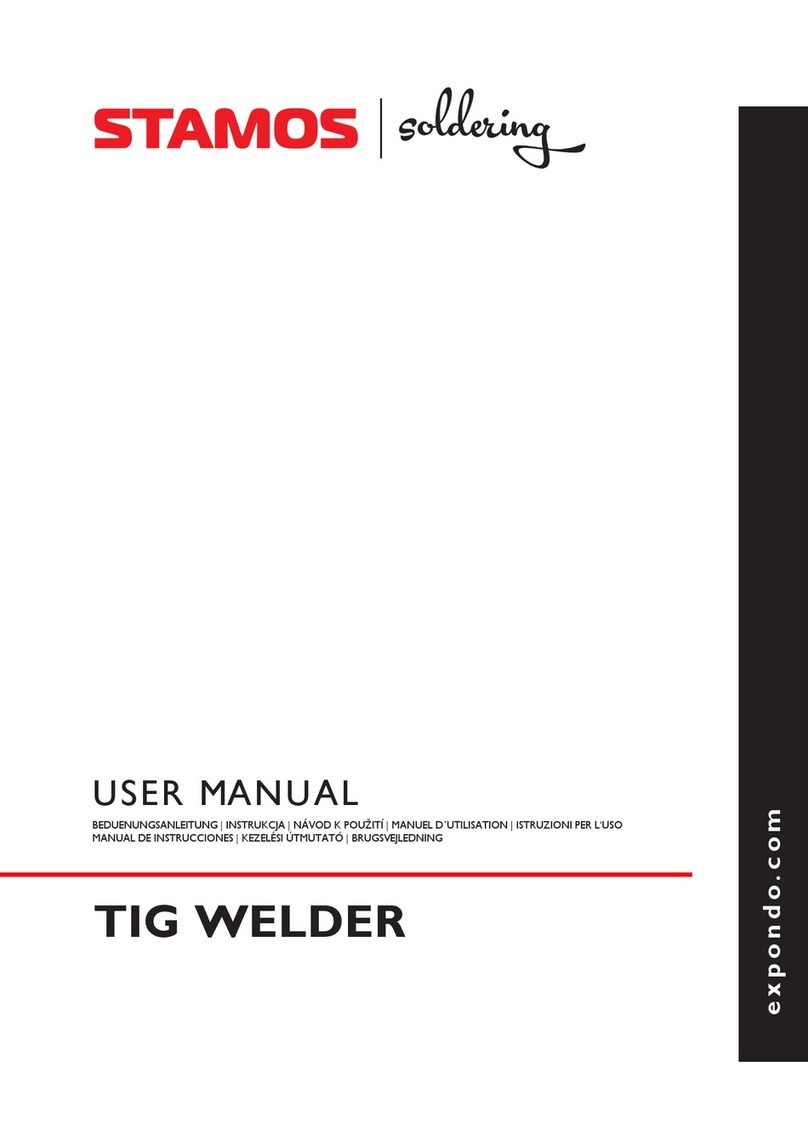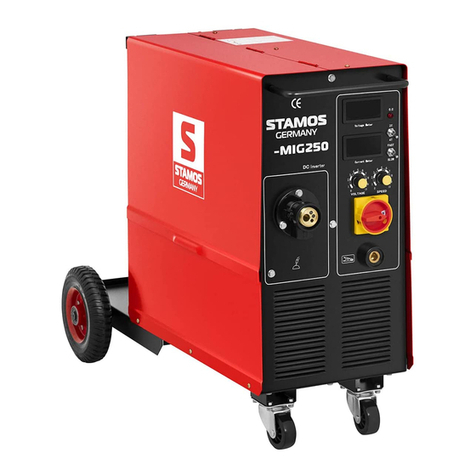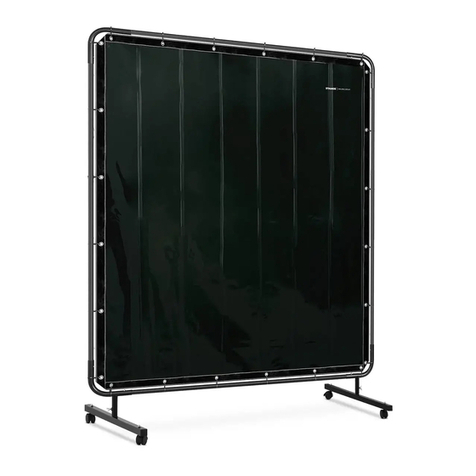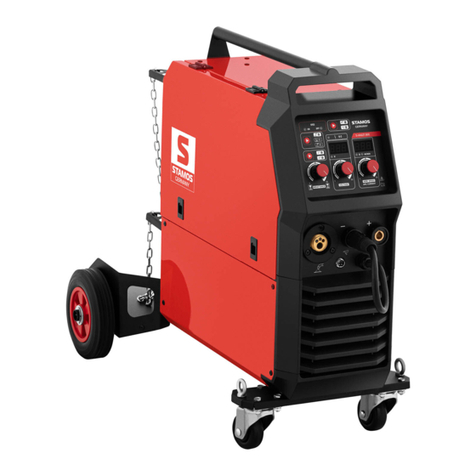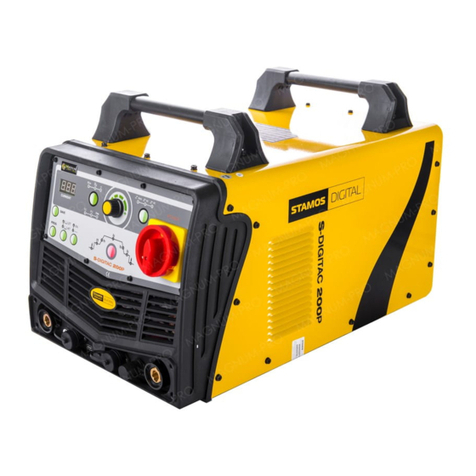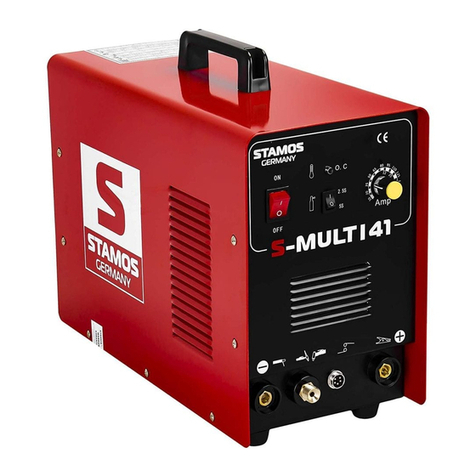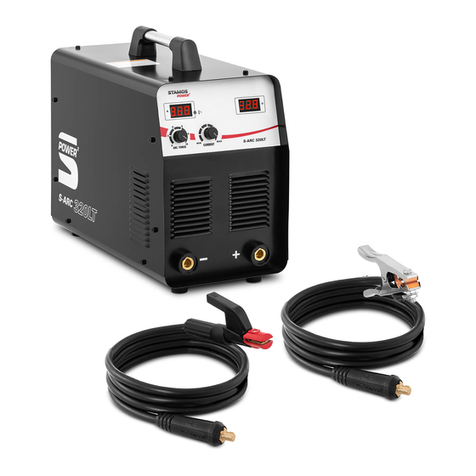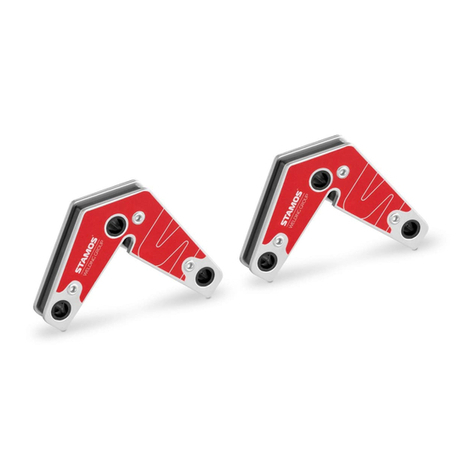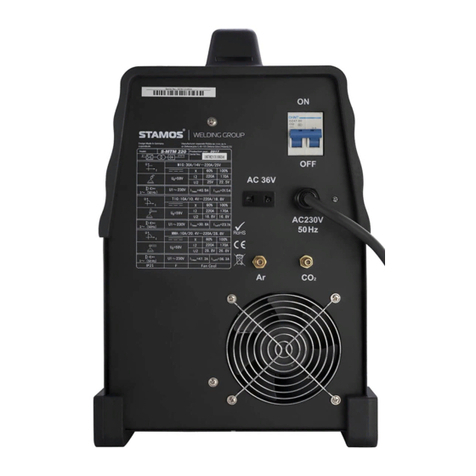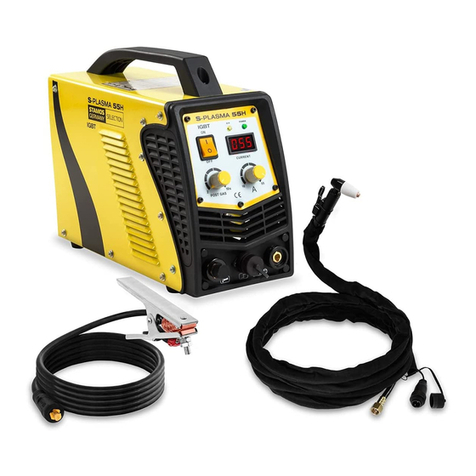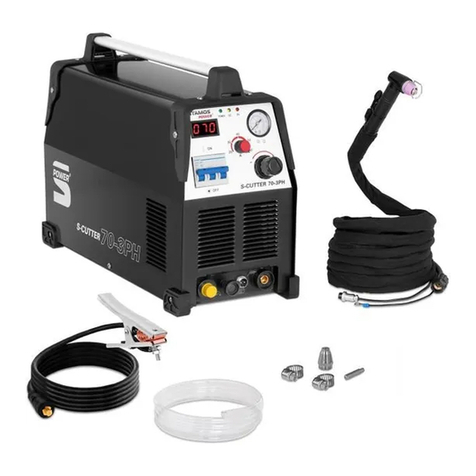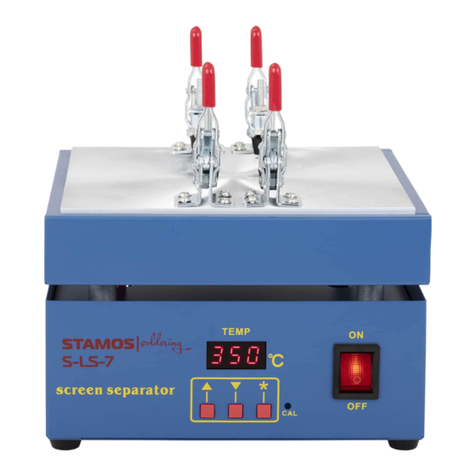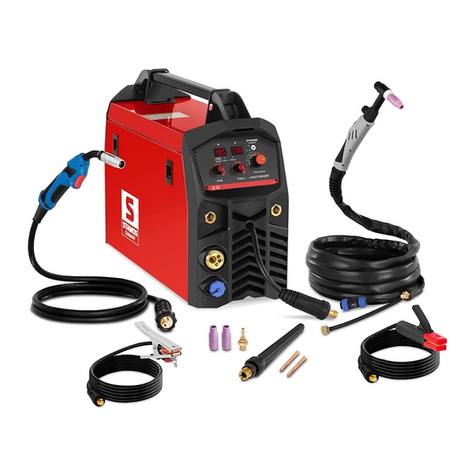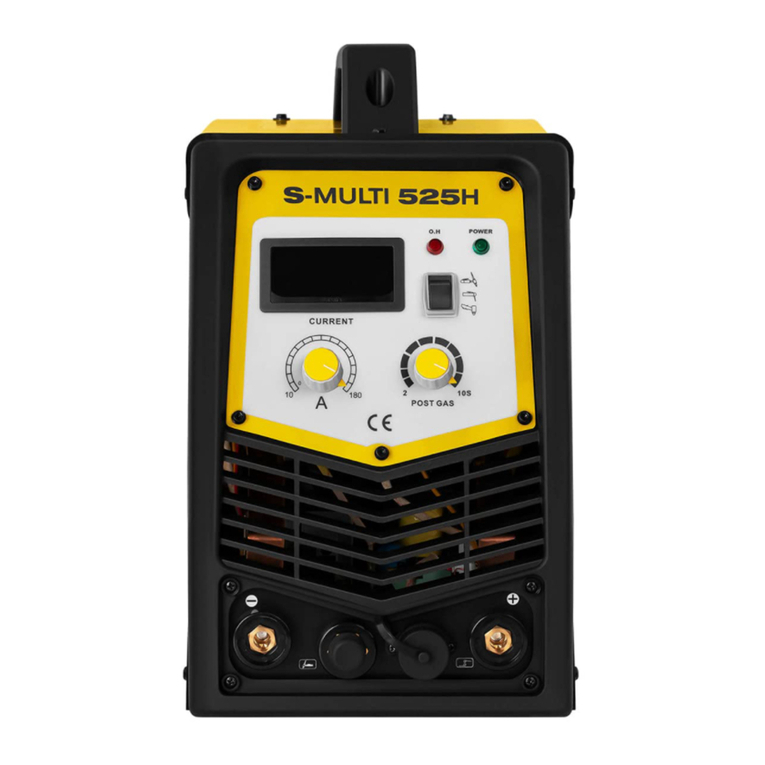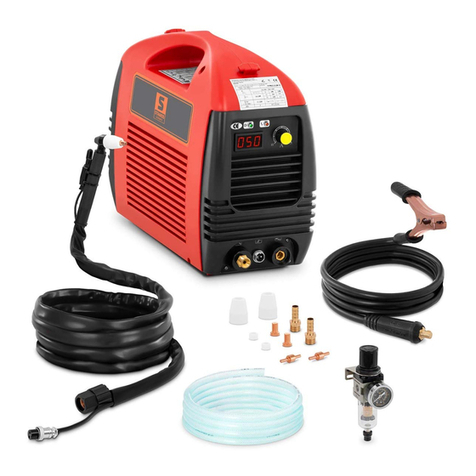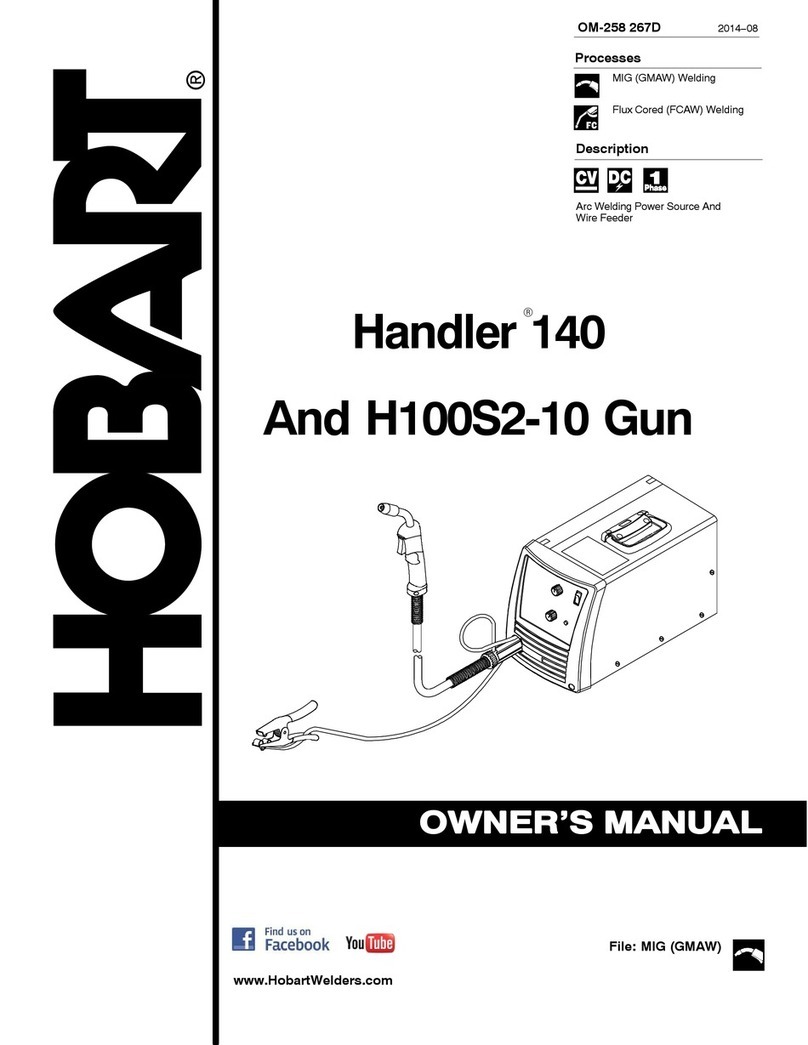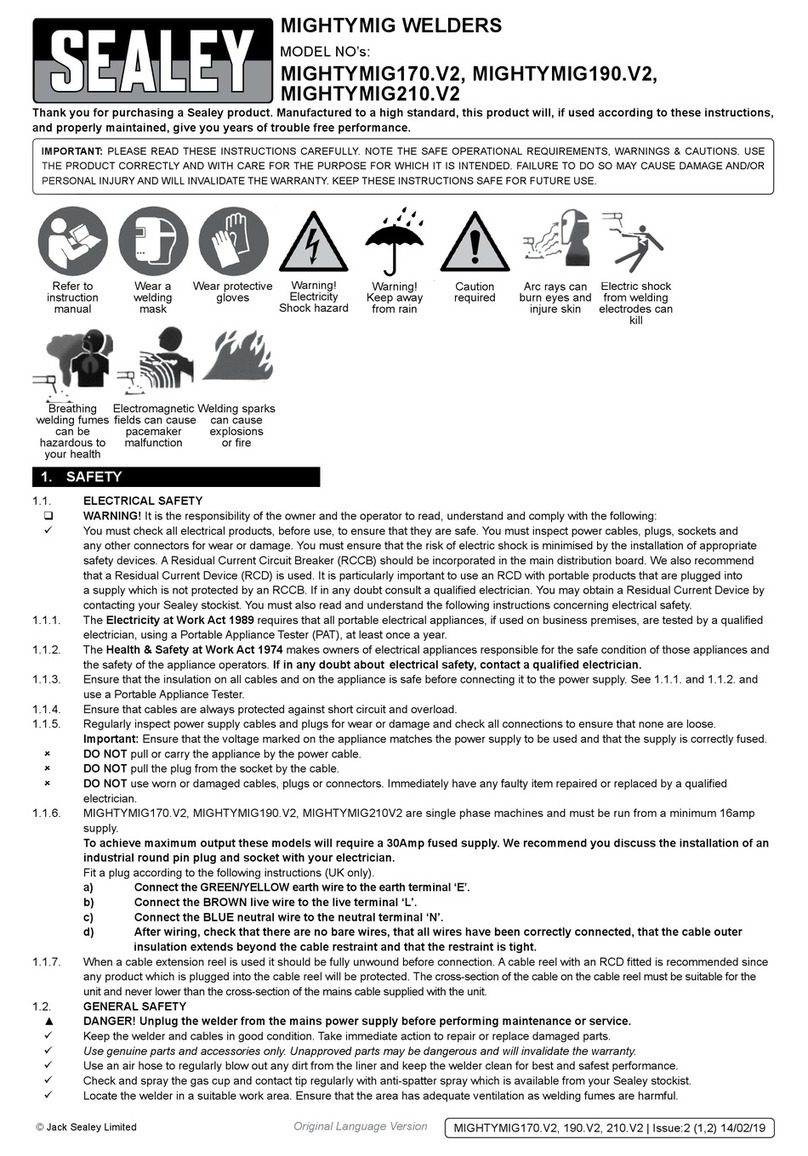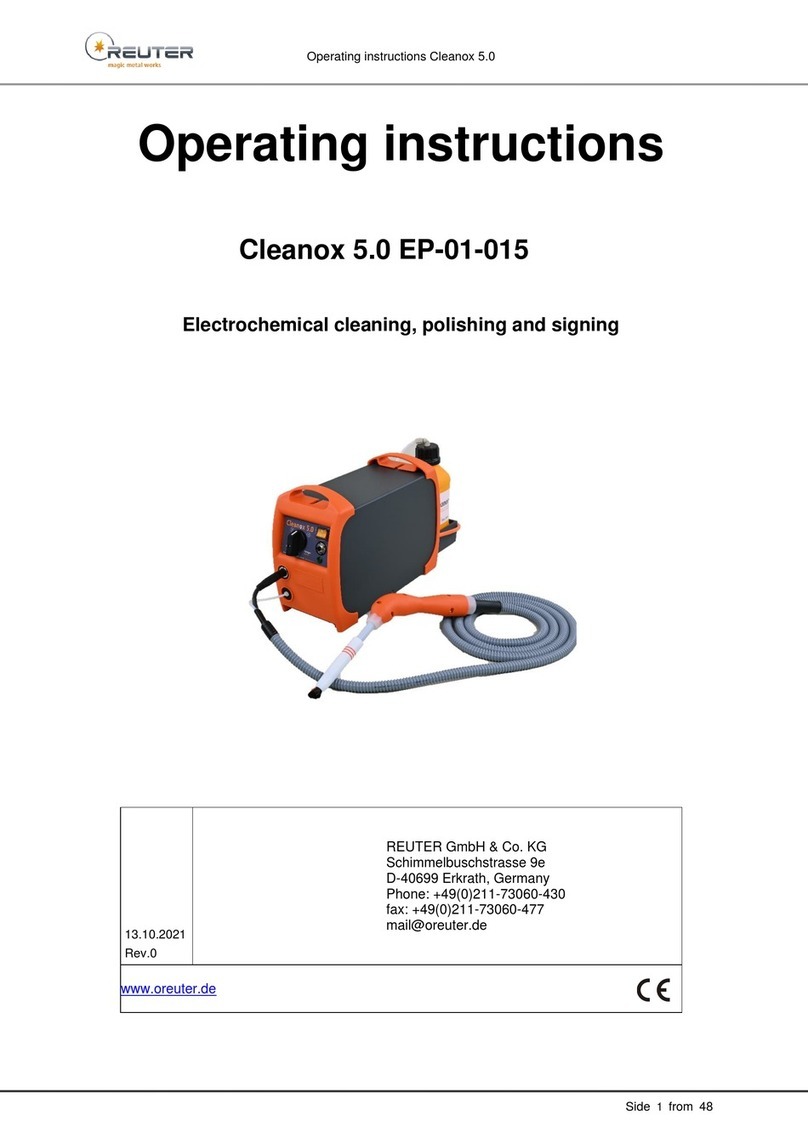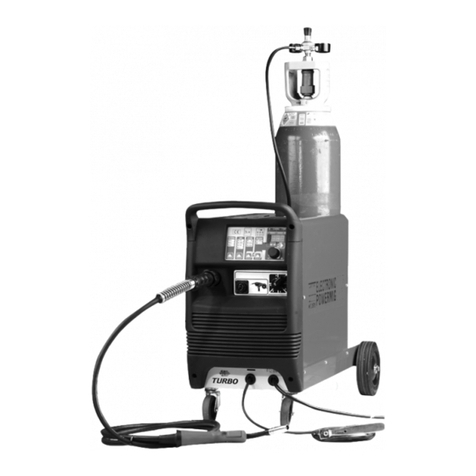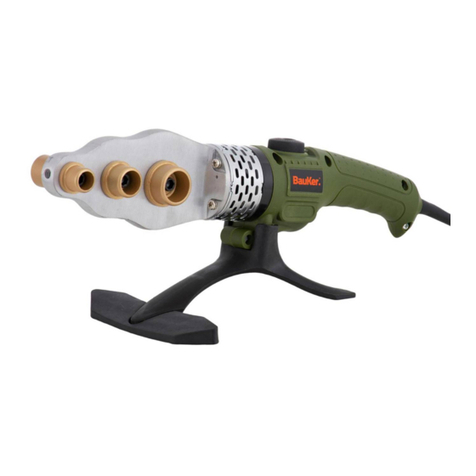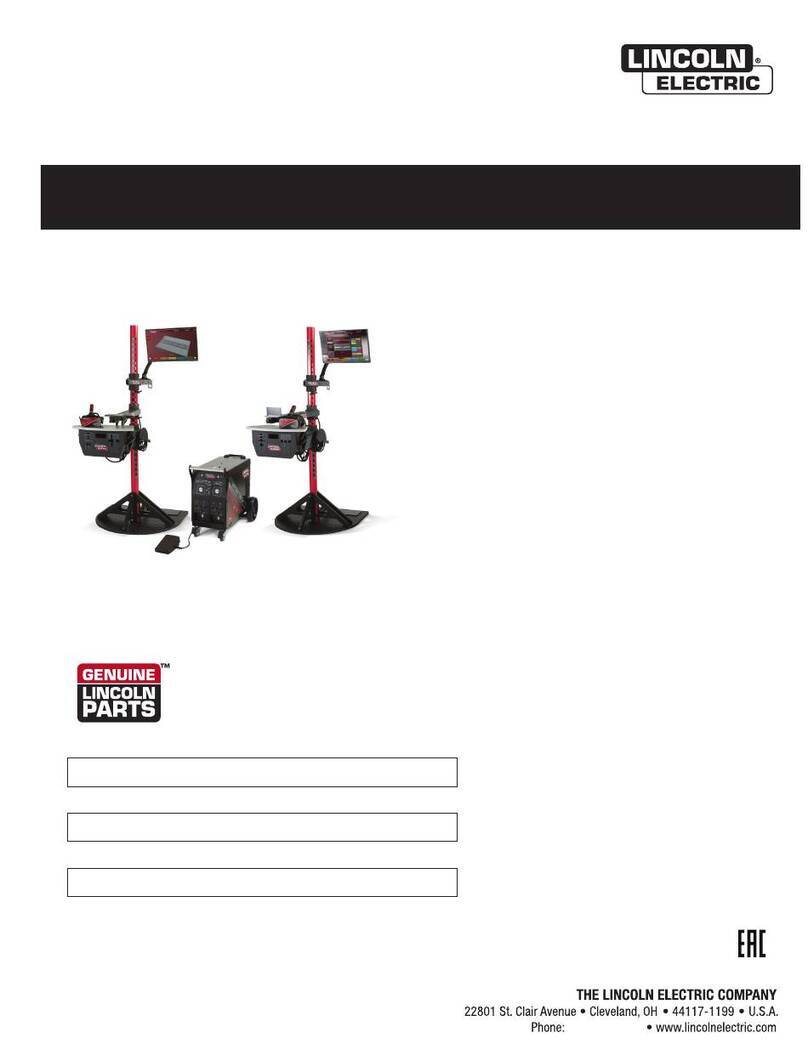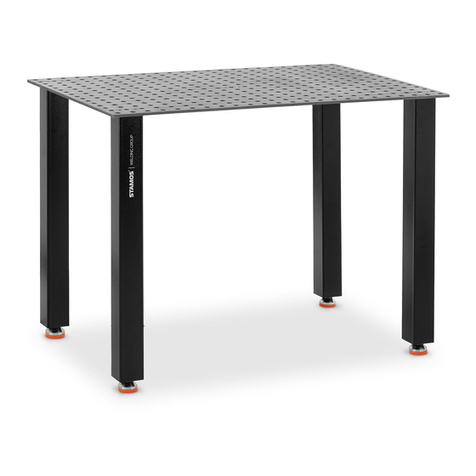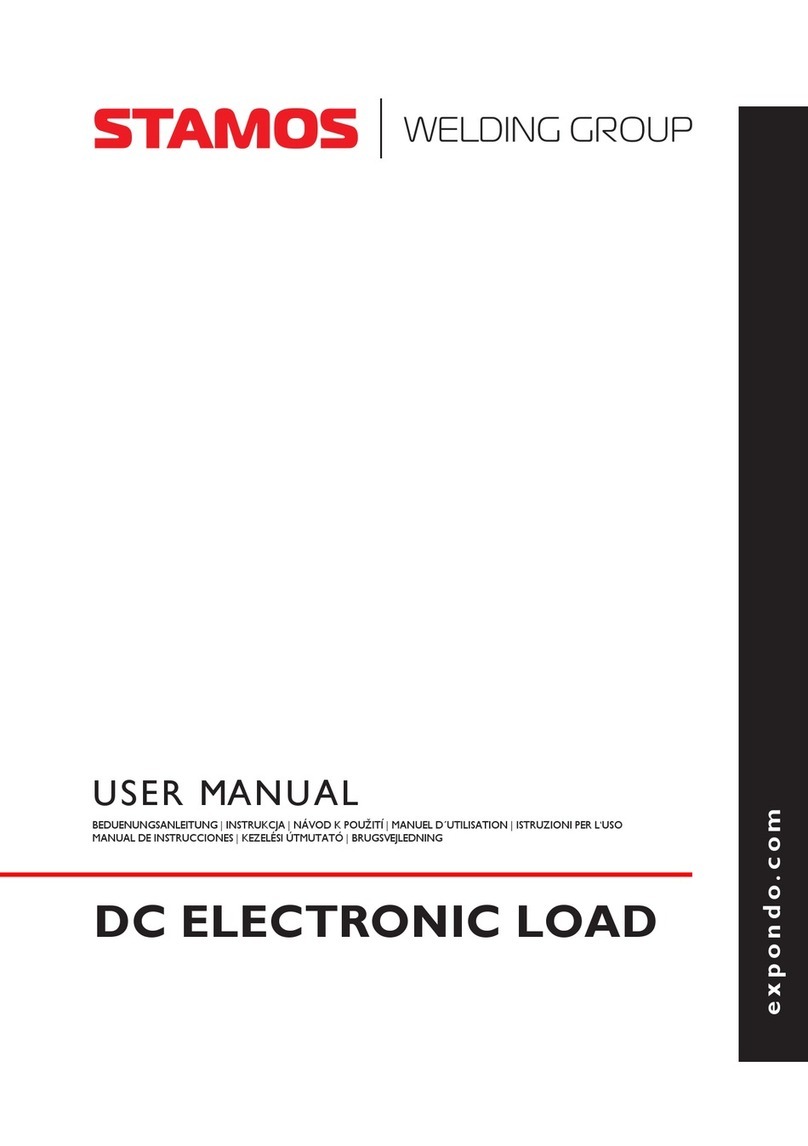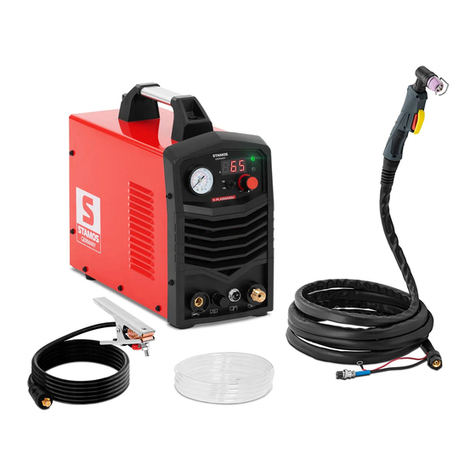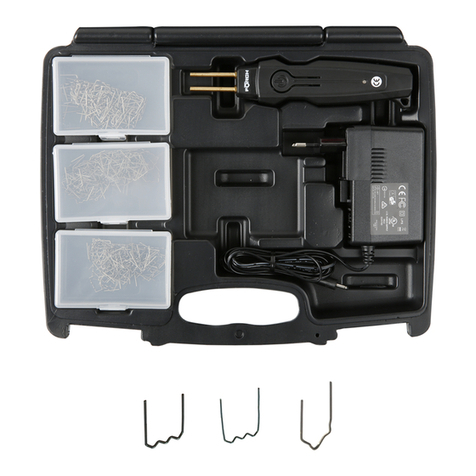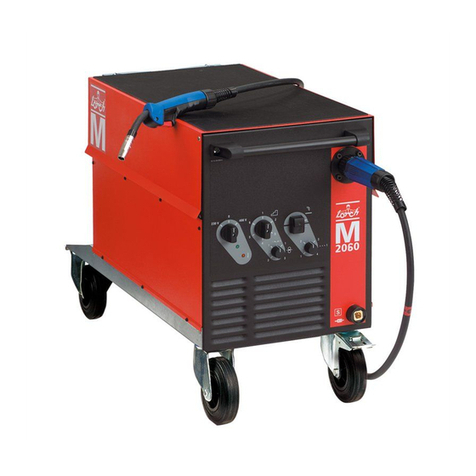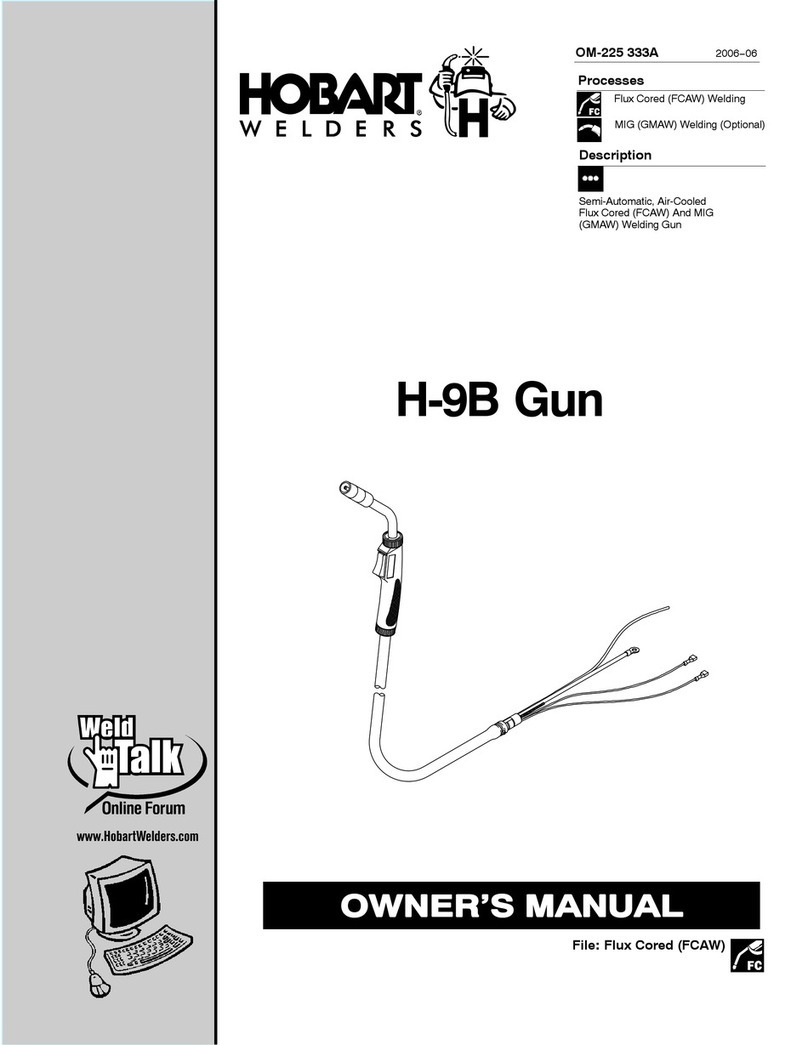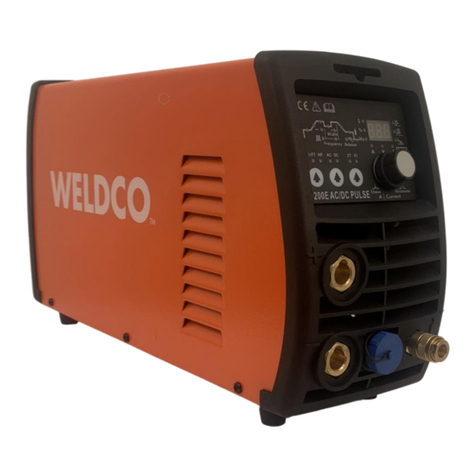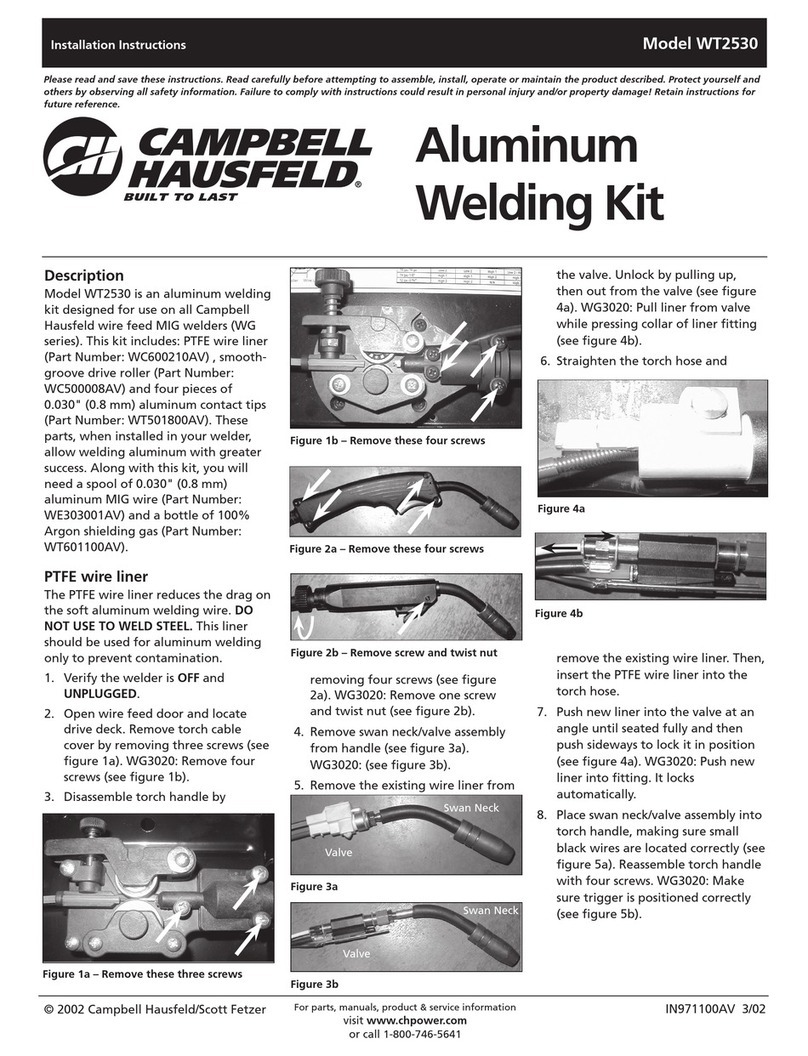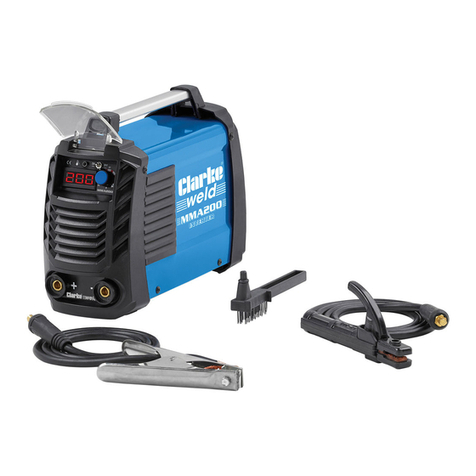
6 7
Rev. 15.05.2020 Rev. 15.05.2020
5. Never leave the tool unattended when it is plugged into an electrical outlet.Turn
off the tool, and unplug it from its electrical outlet before leaving.
6. Always unplug the tool from its electrical outlet before performing and ins- pection,
maintenance, or cleaning procedures.
7. Prevent eye injury and burns. Wearing and using the approved personal safe- ty
clothing and safety devices reduce the risk for injury.
a.Wear the approved safety impact eye goggles with a welding helmet fea- turing
at least a number 10 shade lens rating.
b. Leather leggings, re resistant shoes or boots should be worn when using
this product. Do not wear pants with cuffs, shirts with open pockets, or any
clothing that can catch and hold molten metal or sparks.
c. Keep clothing free of grease, oil, solvents, or any ammable substances. Wear
dry, insulating gloves and protective clothing.
d.Wear an approved head covering to protect the head and neck. Use aprons,
cape, sleeves, shoulder covers, and bibs designed and approved for welding and
cutting procedures.
e. When welding/cutting overhead or in conned spaces, wear ame resistant
ear plugs or ear muffs to keep sparks out of ears.
8. Prevent accidental res. Remove any combustible material from the work area.
a. When possible, move the work to a location well away from combustible;
protect the combustibles with a cover made of re resistant material.
b. Remove or make safe all combustible materials for a radius of 35 feet (10
meters) around the work area. Use a re resistant material to cover or block all
open doorways, windows, cracks, and other openings.
c. Enclose the work area with portable re resistant screens. Protect combustible
walls, ceilings, oors, etc., from sparks and heat with re resistant covers.
d. If working on a metal wall, ceiling, etc., prevent ignition of combustibles on
the other side by mobbing the combustibles to a safe location. If relocation
of combustibles is not possible, designate someone to serve as a re watch,
equipped with a re extinguisher, during the welding process and for at least one
half hour after the welding is completed.
e. Do not weld or cut on materials having a combustible coating or combustible
internal structure, as in walls or ceilings, without an approved method for
eliminating the hazard.
f. Do not dispose of hot slag in containers holding combustible materials.
g. After welding or cutting, make a thorough examination for evidence of re. Be
aware that easily visible smoke or ame may not be present for some time after
the re has started. Do not weld or cut in atmospheres containing
h. Dangerously reactive or ammable gases, vapors, liquids, and dust.
i. Provide adequate ventilation in work areas to prevent accumulation of
ammable gases, vapors, and dust. Do not apply heat to a container that has held
an unknown substance or a combustible material whose contents, when heated,
can produce ammable or explosive vapors. Clean and purge containers before
applying heat. Vent closed containers., including castings, before preheating,
welding, or cutting.
EN
WARNING
INHALATION HAZARD:WELDINGAND PLASMA CUTTING PRODUCE
TOXIC FUMES.
Exposure to welding or cutting exhaust fumes can increase the risk of developing
certain cancers, such as cancer of the larynx and lung cancer.Also, some diseases that
may be linked to exposure to welding or plasma cutting exhaust fumes are:
a. Early onset of Parkinson’s Disease
b. Heart disease
c. Ulcers
d. Damage to the reproductive organs
e. Inammation of the small intestine or stomach
f. Kidney damage
g. Respiratory diseases such as emphysema, bronchitis, or pneumonia
Use natural or forced air ventilation and wear a respirator approved by NIOSH to
protect against the fumes produced to reduce the risk of developing the above illnesses.
9. Avoid overexposure to fumes and gases.Always keep your head out of the fumes.
Do not breathe the fumes. Use enough ventilation or exhaust, or both, to keep
fumes and gases from your breathing zone and general area.
• Where ventilation is questionable, have a qualied technician take an air sampling
to determine the need for corrective measures. Use mechanical ventilation to
improve air quality. If engineering controls are not feasible, use an approved
respirator.
• Work in a conned area only if it is well ventilated, or while wearing an airsupplied
respirator.
• Follow OSHA guidelines for Permissible Exposure Limits (PEL’s) for various fumes
and gases.
• Follow the American Conference of Governmental Industrial Hygienists
recommendations for Threshold Limit Values (TLV’s) for fumes and gases.
• Have a recognized specialist in Industrial Hygiene or Environmental Services check
the operation and air quality and make recommendations for the specic welding
or cutting situation.
10. Always keep hoses away from welding/cutting spot. Examine all hoses and cables
for cuts, burns, or worn areas before each use. If any damaged areas are found,
replace the hoses or cables immediately.
11. Read and understand all instructions and safety precautions as outlined in
the manufacturer’s Manual for the material you will weld or cut.
12. Proper cylinder care. Secure cylinders to a cart, wall, or post, to prevent them from
falling.All cylinders should be used and stored in an upright position. Never drop
or strike a cylinder. Do not use cylinders that have been dented. Cylinder caps
should be used when moving or storing cylinders. Empty cylinders should be kept
in specied areas and clearly marked “empty.”
13. Never use oil or grease on any inlet connector, outlet connector, or cylinder valves.
EN









